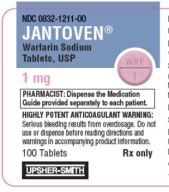Week of February 12, 2018
 Efficacy of the 2017-2018 influenza vaccine
Efficacy of the 2017-2018 influenza vaccine
2017-2018 Seasonal flu has been widespread with high rates of hospitalization
- Caused by one strain of influenza A called H3N2, with another strain of influenza A called H1N1 and strains of influenza B contributing to lesser extents
- Viruses can change genetic make-up rapidly during course of single year
- Questions raised about how flu vaccine efficacy; initial report of 36%
Select strains for next season’s flu vaccines
- Convene Vaccines and Related Biological Products Advisory Committee
- Collaboration with WHO, CDC, NIH, other federal partners to address full spectrum of measures for optimal protection
- Select most appropriate flu strains, provide seed viruses and quality control reagents to manufacturers, ensure quality of manufacturing process
- Analyze CMS databases covering millions of individuals for signals
- Better effectiveness with cell-based vs egg-based vaccine
CLIA-Waived Rapid Flu Test Facts
Available Rapid flu tests have demonstrated acceptable clinical performance
- Antigen-based rapid flu tests (rapid influenza diagnostic tests or RIDTs)
- Nucleic acid-based rapid molecular flu tests
Performance Levels for antigen-based RIDTs
- Reclassified into class II to improve overall quality of flu testing
- Prompted by poor sensitivity resulting in misdiagnosed cases, even death.
- Established special controls for assuring accuracy, reliability and clinical relevance
2017-2018 Flu Season
- Earlier than usual flu season with high incidence of flu cases
- Manufacturers’ marketing forecasts may have underestimated needs
- Some manufacturers have ramped up production

 Warfarin INR test meters
Warfarin INR test meters
INR test meter is portable, battery-operated meter, to monitor patient response to warfarin (brand names Coumadin and Jantoven)
- Medical Device Reporting (MDRs) of adverse events of inaccurate results
- Need to update information provided to patients, caregivers, and health care providers to safe and effective use
Updates include
- Correct use: how to take blood from a fingerstick, how to make sure meter working properly
- Information for health care providers: Medical conditions that could affect test results, recommendations for confirming test results
- How to report problems with INR test meters
New FDA funding to promote innovation and broaden patient access through competition
- Foster development of therapeutics and diagnostics for unmet medical needs
- Advance drug and device competition
- New domestic industries – pharmacy outsourcing facilities
- Create modern, domestically-based manufacturing
I. Promote Domestic Manufacturing
- Development of efficient regulatory pathways for personalized medicines and novel technologies – such as cell- and gene-based therapies, vaccines
- Continuous manufacturing platforms to ramp up on short notice
- Return product manufacturing to domestic sites, foster job creation
II. Robust and Reliable Source of Compounded Products
- Create “Center of Excellence on Compounding for Outsourcing Facilities”
- Wider availability of reliable compounded drugs meeting GMP
III. Advance Medical Device Manufacturing and Quality
- Voluntary program for certification of manufacturers
- Facilitate manufacturing innovation, investment in new production methods/ materials, lead to better medical products
- Work collaboratively with industry, patients, providers and payers to develop parameters
IV. New Medical Data Enterprise
- Advance use of Real-World Evidence to better inform patient care, provide more efficient, robust lower-cost ways to develop clinical data
- Expanded use of natural language processing to speed recognition and remediation of emerging safety concerns
- Cover data gaps in the Sentinel and NEST systems
V. Digital Health Technology Industry and Framework for Reliable Post-Market Oversight
- New paradigm to market lower-risk products without FDA premarket review and market higher-risk products with streamlined FDA review
- Validate quality of a firm’s software design and firm’s methods for certifying the quality and reliability of its underlying software performance
- Create Center of Excellence on Digital Health to recognize third-party certifiers, support cybersecurity unit
VI. Modern Science-Based Principles for New Drug Development
- Build knowledge management system and portal
- Build on evolving information, decisions, gaps in policies and pathways, consistent responses to regulatory questions, prevent delays in response to innovations
VII. Medical Products Targeted to Rare Diseases
- Develop clinical trial networks to understand natural history and clinical outcomes
- Initial focus would be on rare and ultra-rare diseases to address challenges in clinical trial recruitment
VIII. Modernize Generic Drug Development
- Create new review platform for data-based assessment
- Improve clarity for generic sponsors, reviews more efficient, increasing first-cycle approvals
Advancing development of novel treatments for neurological conditions
Symptoms and progression of neurological diseases vary significantly across patients, within patients, across organ systems
- Urgent need for new medical treatments
- Need to modernize multiple aspects of regulatory programs
CDER team-based modern approach
- Integrate expert knowledge across different fields, different stages of product life cycle toward a common public health goal
- Piloting streamlined process for writing science-based, disease-based guidance documents
Duchenne Muscular Dystrophy and Related Dystrophinopathies
- Support from Parent Project Muscular Dystrophy with scientific and patient input from DMD community
- Support from ALS Association guidance funded by “ice bucket challenge”
- Innovative approaches to studying very early disease before onset of dementia, use of sensitive cognitive screening, imaging tests, or biomarkers
- Innovative approaches to clinical trial design for acute migraine
- Rigorous approach based on extrapolation of effectiveness adult patients to pediatric patients
External Stakeholder Meeting Request (ESMR) system
Meetings between stakeholders and CDER promote effective two-way communication to improve drug development and safety
- To help external, non-industry stakeholders more easily request meetings with CDER
- Mechanism for communicating, sharing ideas to improve efficiency and advance medical product development
- ESMR system to improve value and efficiency of stakeholder meetings
- Professional Affairs and Stakeholder Engagement (PASE) Staff facilitate meeting
Image credit: FDA



